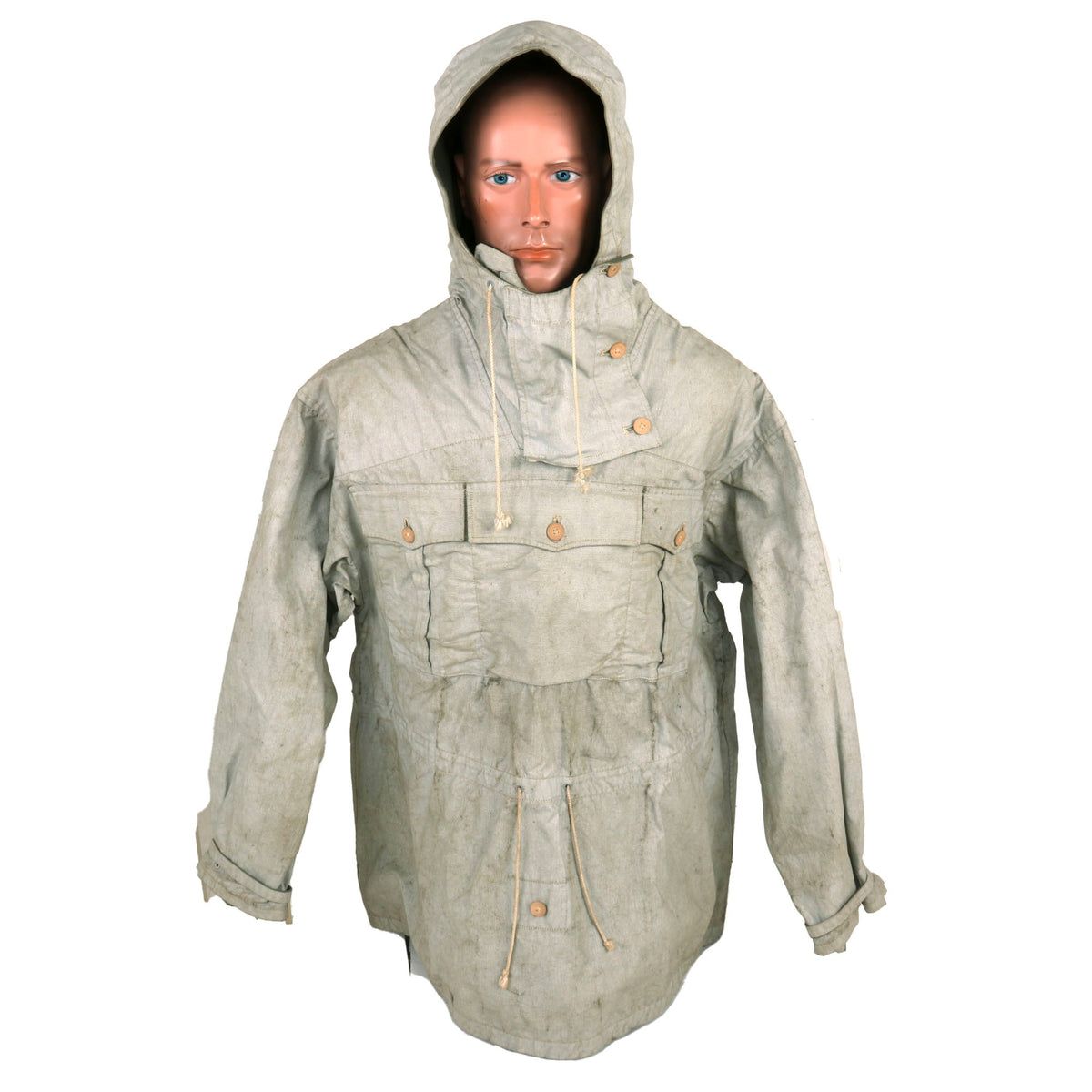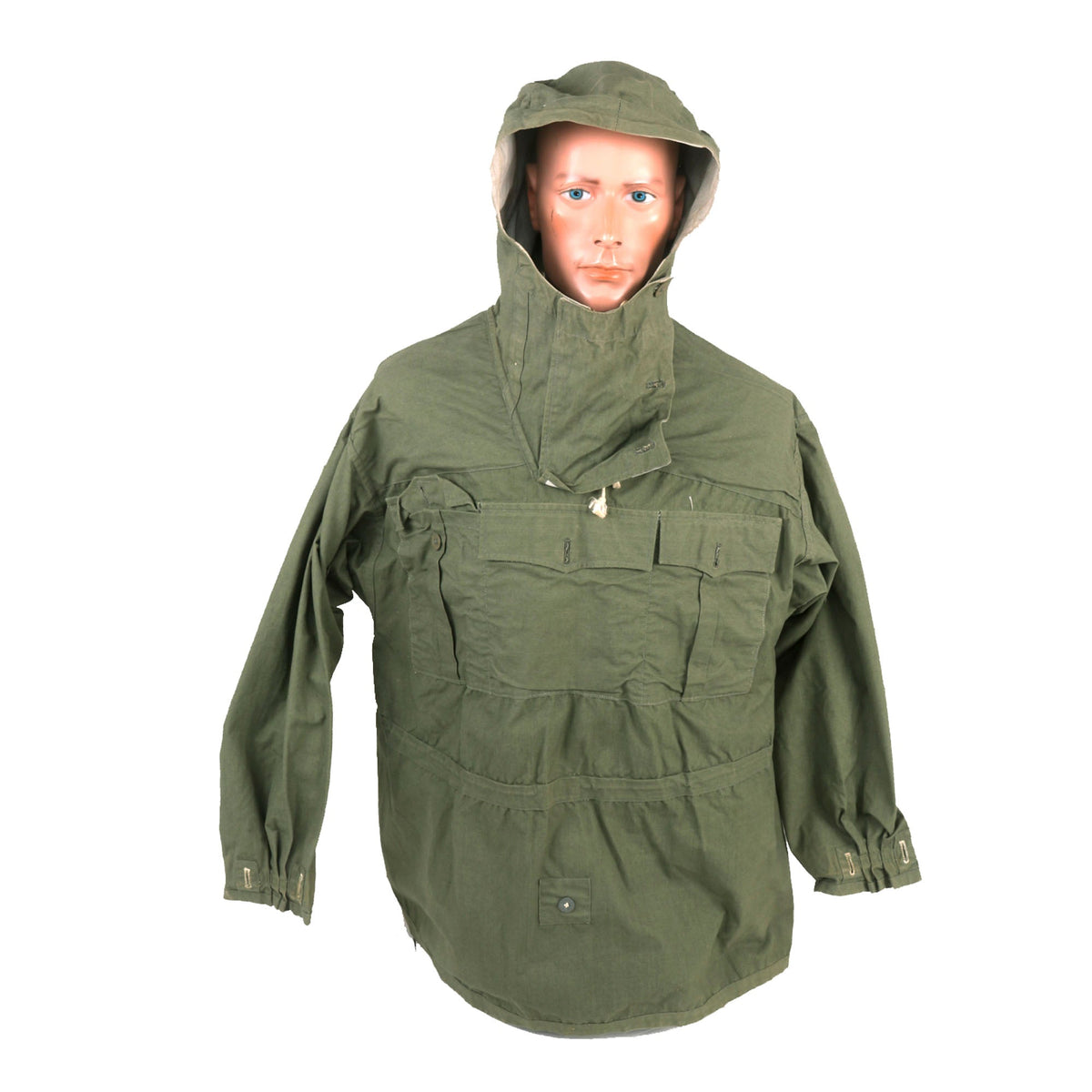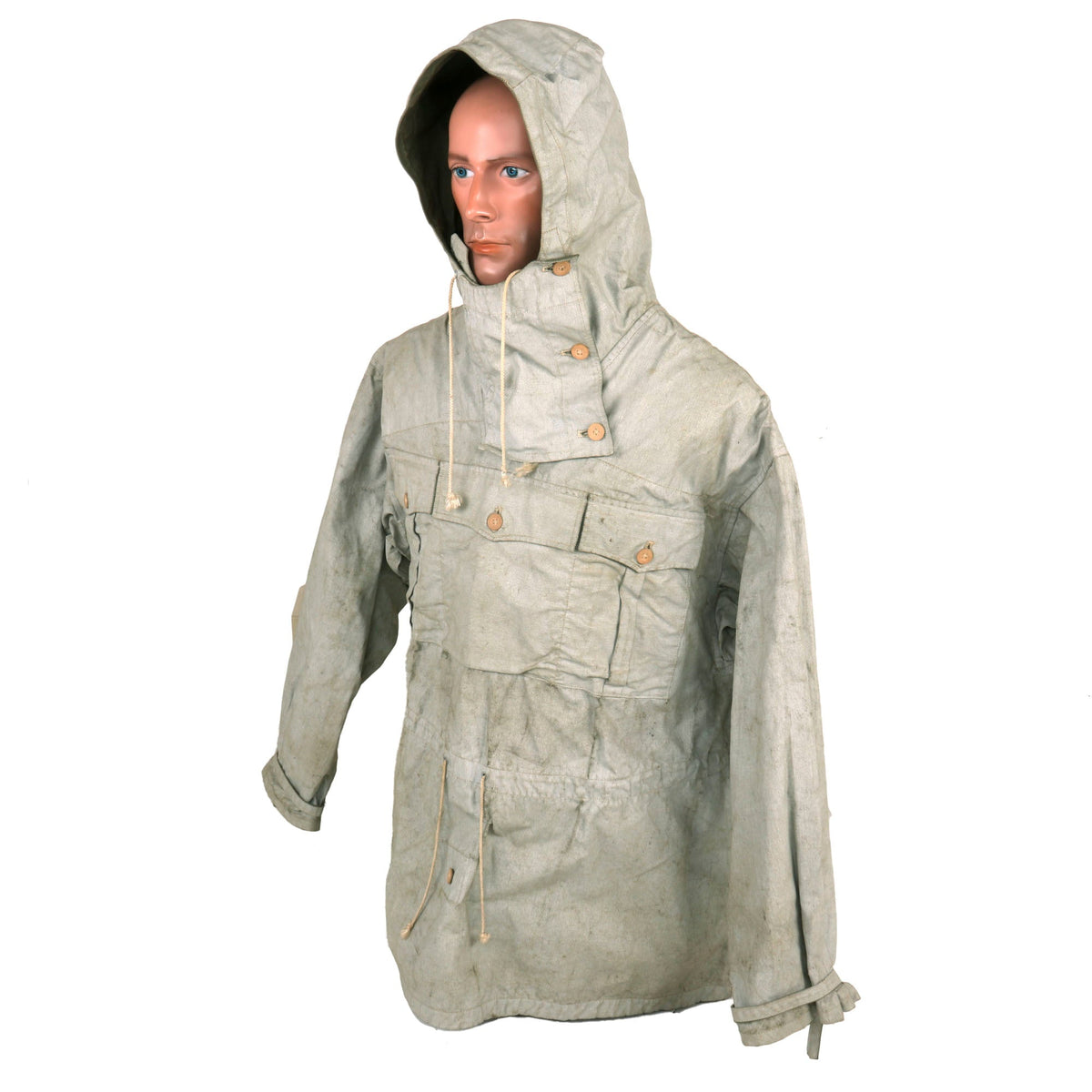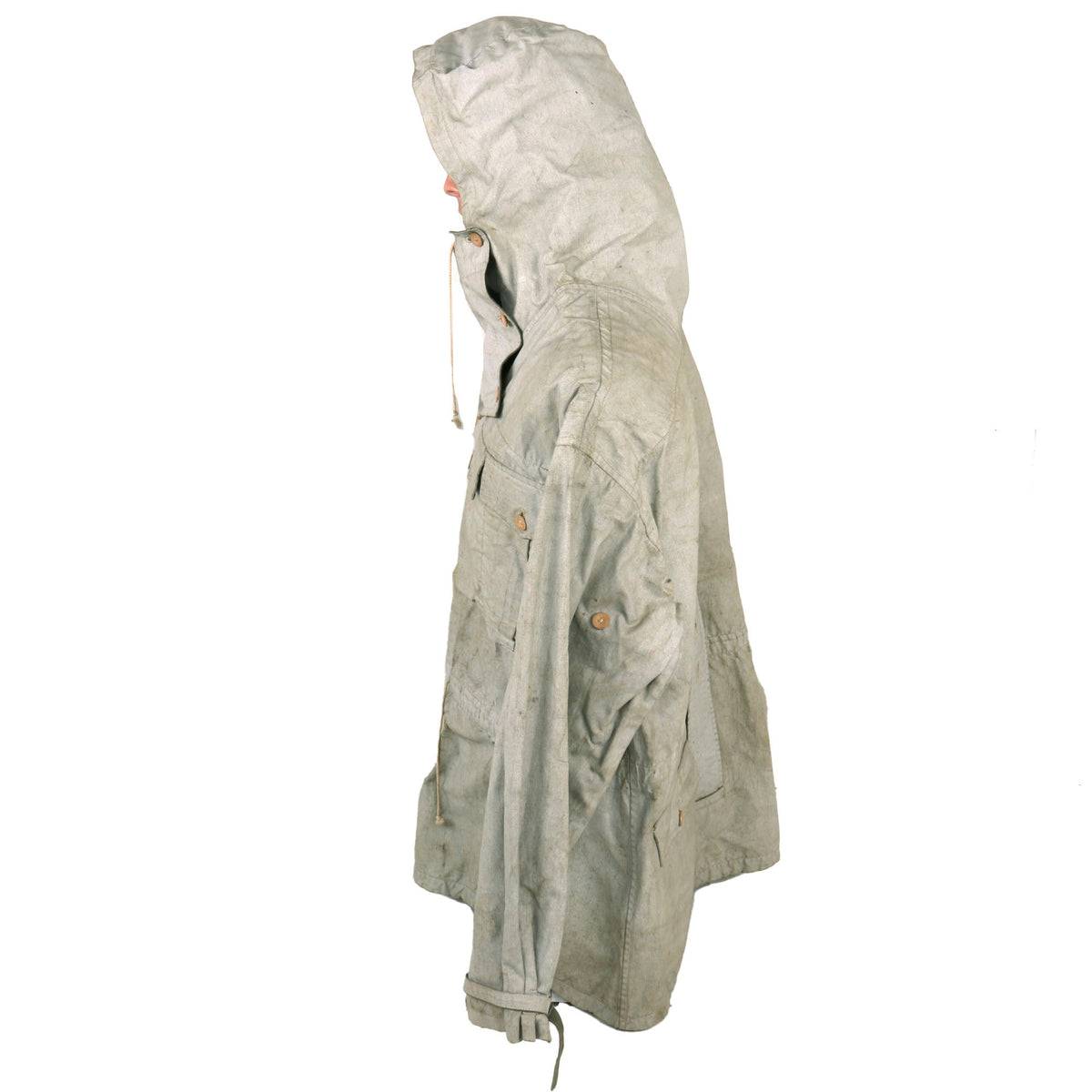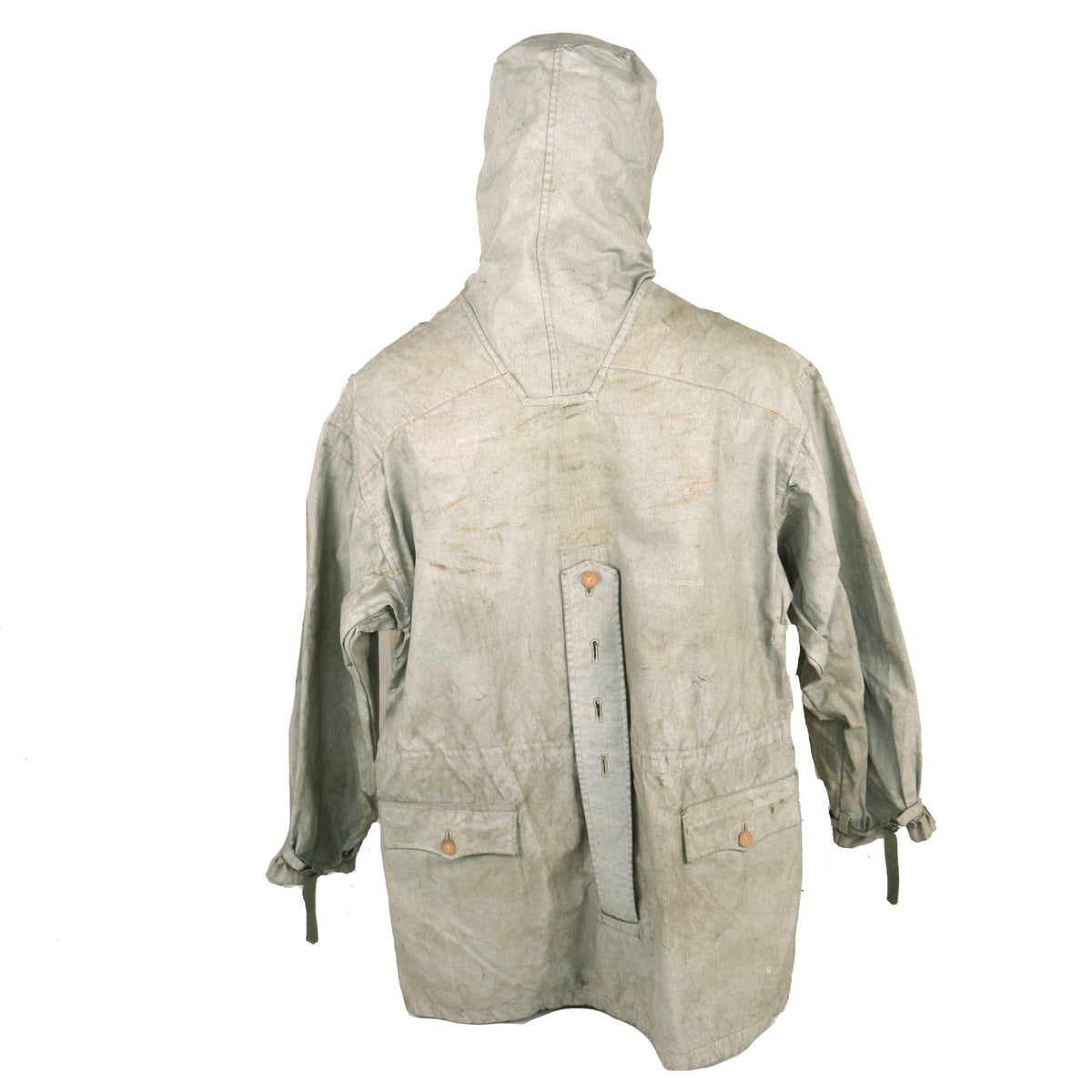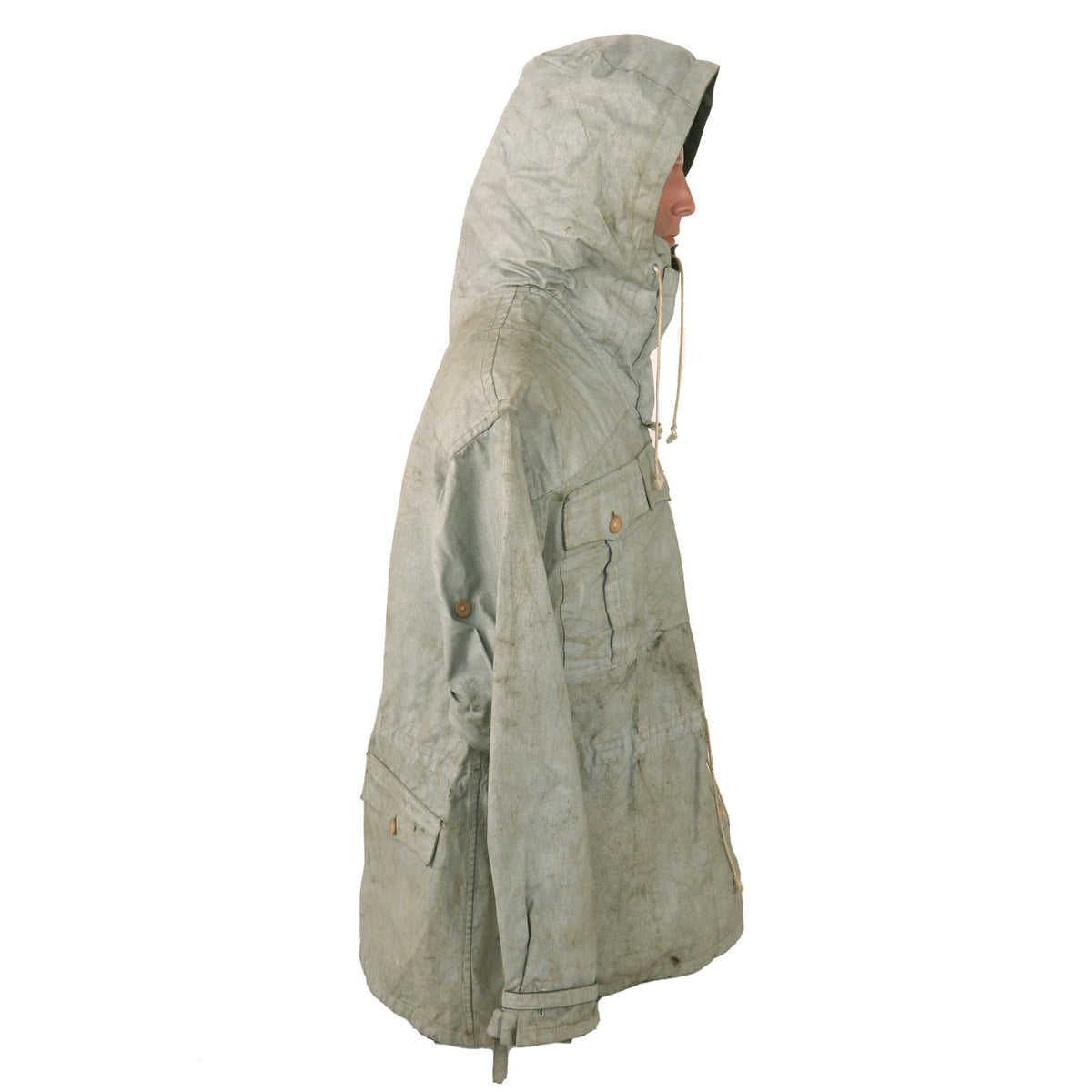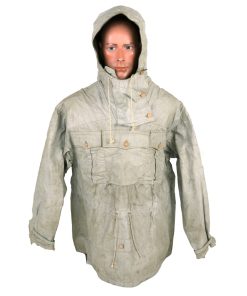Original German WWII Gebirgsjäger Mountain Trooper M42 Wind Anorak Reversible Smock – dated 1943 Original Items
$ 995,00 $ 248,75
Original Item: Only One Available. This is a lovely example of a rare German WWII Gebirgsjäger (Mountain Trooper) M42 Wind Anorak, the first that we have ever had! We previously had one of the wind breakers with a front closure, but this is a “pullover” style anorak, which is also reversible, with the interior made from white printed field gray material. Like the wind breaker, the anorak was intended to wear over the regular service uniform to block the wind, which unfortunately could easily infiltrate wool uniforms. By providing a solid relatively non-permeable layer, these were very effective at blocking the wind and other weather.
The wind anorak features two waist pockets, and three pockets across the chest, with an equal number on the inner side. The waist pockets can be pushed through to use with the other side. There is also a strap to go through between the pant legs to keep the anorak from being blown upwards.
There are what look to be maker and size markings on the inside of the neck closure flap, which we unfortunately cannot quite read, however at the bottom is M 43, indicating processing through the München (Munich) clothing depot in 1943.
Condition is very good, with some deterioration of the white side, which is printed or sprayed onto the fabric, making it a bit stiff and prone to wear and cracking. It looks like this example has been mostly stored in the “winter” configuration.
A lovely example of a hard to find piece of German Mountain Trooper gear, ready to research and display!
Gebirgsjäger material is among the most popular of all German WWII items. They were the light infantry part of the alpine or mountain troops (Gebirgstruppe) of Germany and Austria. The word Jäger (meaning “hunter” or “huntsman”) is a characteristic term used for light-infantry or light-infantryman in German-speaking military context.
The mountain infantry of Austria have their roots in the three Landesschützen regiments of the Austro-Hungarian Empire. The mountain infantry of Germany carry on certain traditions of the Alpenkorps (Alpine corps) of World War I. Both countries’ mountain infantry share the Edelweiß insignia. It was established in 1907 as a symbol of the Austro-Hungarian Landesschützen regiments by Emperor Franz Joseph I. These troops wore their edelweiss on the collar of their uniforms. When the Alpenkorps came to aid the Landesschützen in defending Austria-Hungary’s southern frontier against the Italian attack in May 1915, the grateful Landesschützen honored the men of the Alpenkorps by awarding them their own insignia: the edelweiss. Together with the Fallschirmjäger (Paratroopers) they are perceived as the elite infantry units of the German Army.
Fast Shipping with Professional Packaging
Thanks to our longstanding association with UPS FedEx DHL, and other major international carriers, we are able to provide a range of shipping options. Our warehouse staff is expertly trained and will wrap your products according to our exact and precise specifications. Prior to shipping, your goods will be thoroughly examined and securely secured. We ship to thousands clients each day across multiple countries. This shows how we're dedicated to be the largest retailer on the internet. Warehouses and distribution centres can be located throughout Europe as well as the USA.
Note: Orders with more than one item will be assigned a processing date depending on the item.
Before shipping before shipping, we'll conduct a thorough inspection of the items you have ordered. Today, the majority of orders will be delivered within 48 hours. The delivery time will be between 3-7 days.
Returns
The stock is dynamic and we cannot completely manage it because multiple stakeholders are involved, including our factory and warehouse. So the actual stock may alter at any time. It's possible that you may not receive your order once the order has been made.
Our policy is valid for a period of 30 days. If you don't receive the product within 30 days, we are not able to issue a refund or an exchange.
You can only return an item if it is unused and in the same state as the day you received it. You must have the item in its original packaging.
Related products
Uncategorized
Armoured Fighting Vehicles of the World: AFVs of World War One (Hardcover Book) New Made Items
Uncategorized
Uncategorized
Uncategorized
Uncategorized
Uncategorized
Uncategorized
Uncategorized
Band of Brothers ORIGINAL GERMAN WWII Le. F.H. 18 10.5cm ARTILLERY PIECE Original Items
Uncategorized
Uncategorized
Australian WWII Owen MK1 Machine Carbine SMG Custom Fabricated Replica with Sling Original Items
Uncategorized
Uncategorized
Uncategorized
Uncategorized
Uncategorized
Uncategorized
Uncategorized
